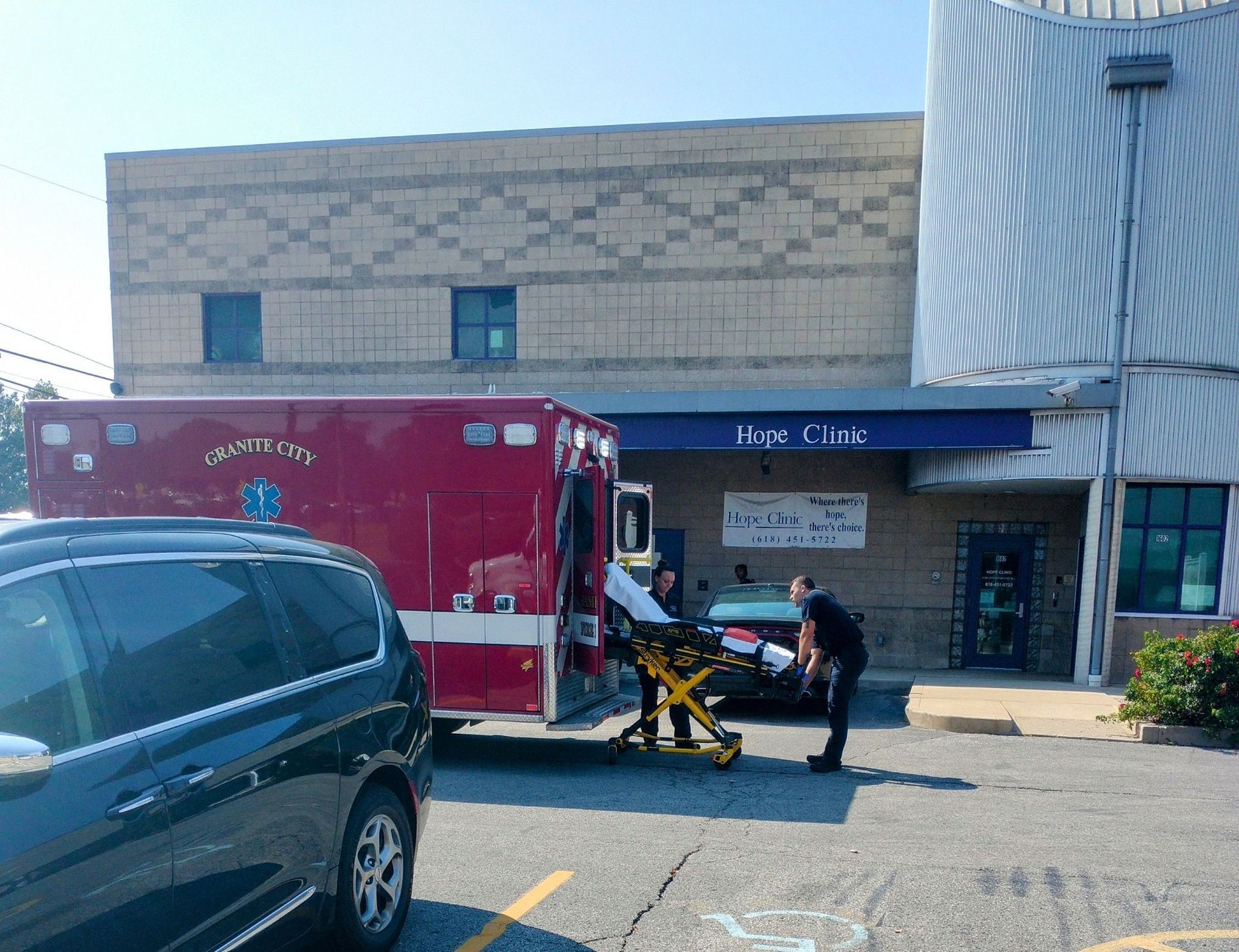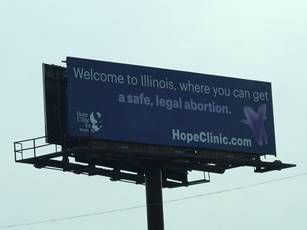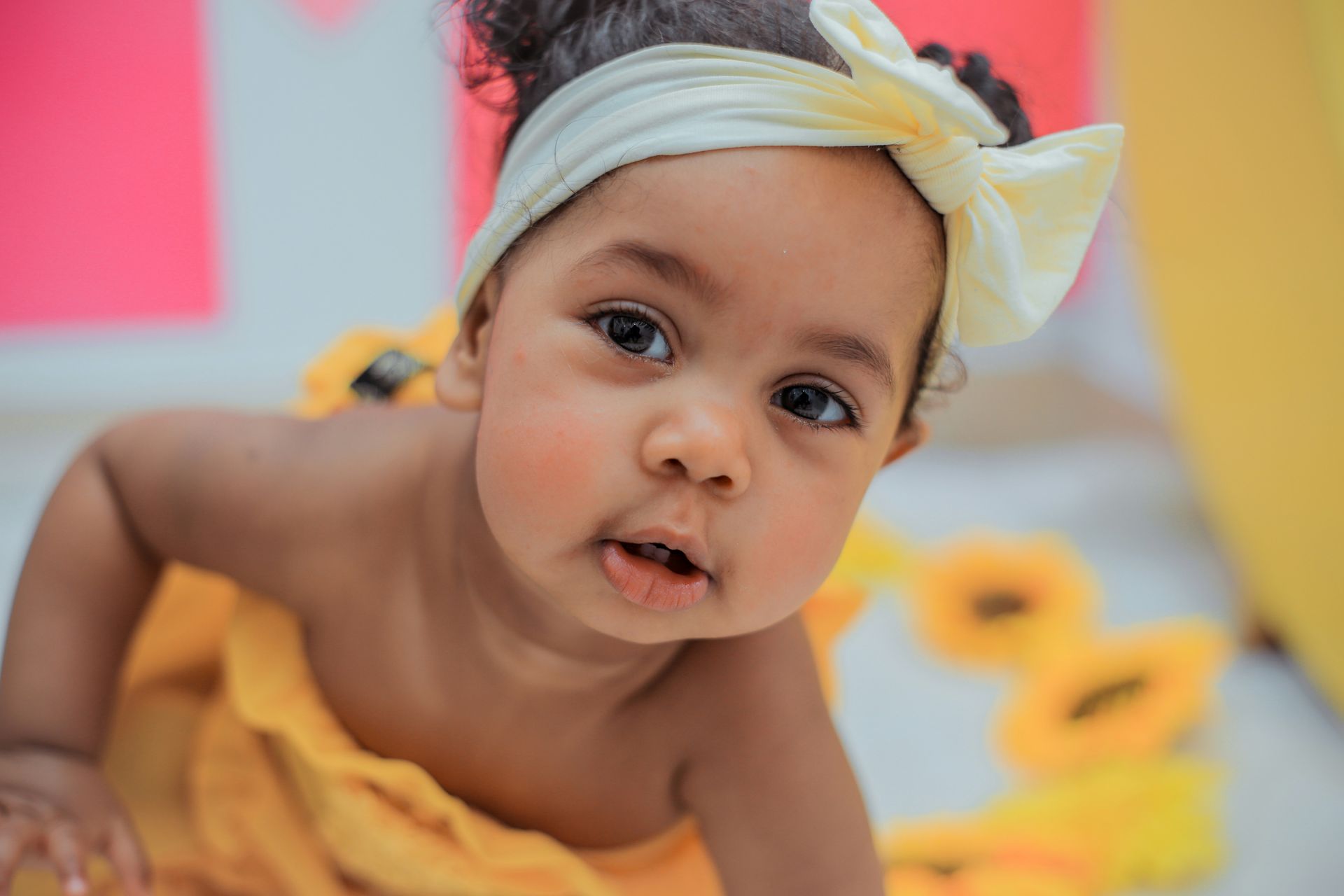By Restoration News
•
October 28, 2025
Oct 27, 2025 Samantha Flom Abortion | Follow the Money Patients' reviews of Granite City's longtime abortion mill describe the horrors and potential crimes that take place inside its walls. Less than 10 miles to the northeast of St. Louis sits Illinois' oldest continuously operating abortion clinic. Granite City's deceptively named Hope Clinic is well known in the Midwest for its long history of butchering babies since 1974—just one year after the Supreme Court decided Roe v. Wade. Much less publicized is the clinic's apparent history of butchering women. A search of Madison County's court records turns up decades of lawsuits accusing Hope Clinic and its abortionists of medical malpractice, negligence, and even wrongful death. Dozens of Google reviews build on those claims with chilling tales of unsanitary conditions, verbal abuse, and lasting physical and emotional trauma. Still, the clinic not only remains open but has now expanded to include a swanky new location in Uptown Chicago that advertises "all-trimester" abortions. So, how does a business plagued by litigation and poor reviews manage to survive? Nameless, faceless donors obscured by the Left's favorite dark money network. The Abortion Mill At one point, it was Granite City's old steel mill that drew people from across the country to the area. "Now, it's the abortion mill," said Angela Michael, CEO of Small Victories Pregnancy Outreach. Hope Clinic has made headlines in recent years for the sheer volume of traffic the facility continues to receive from states with stricter abortion laws since Roe's reversal. In Illinois, abortion is legal for any reason up until fetal viability—or roughly 22 to 24 weeks' gestation—and to protect the mother's life and health after that. Hope Clinic's Granite City location offers abortions as late as 27 weeks and six days into a pregnancy, or the end of the second trimester, making the facility a popular choice for desperate women seeking late-term abortions. "[Women from] all 50 states are flown in, and families come with them, so it's just very sad to see," Michael said. Those who arrive at the clinic are likely to find Michael, her husband Daniel, and their mobile pregnancy center out front. For more than three decades, the Highland couple has been helping Hope Clinic patients choose life for their babies by offering free pregnancy testing, ultrasounds, counseling, doctor referrals, and baby supplies to those in need. Michael estimates they've saved more than 7,000 babies through their efforts and convinced several abortion workers to leave the industry. "They have come out and blindsided me and told me, 'I'm leaving today, Angela. Your ministry's changed my life. I'm going out to do what real nurses should be doing," she said. But along with those miracles, they've also seen tragedies. "Almost two years ago in December, we saw four ambulances in one week," Michael recalled, noting that she chronicles everything she witnesses and learns about the clinic on her two websites and Facebook page. "People have shared with me, written me letters about the inside of that abortion clinic, the filthiness, and I've reported it," she said. "Just the stench was a turn-off to some of the women that went in there, and they would change their minds and not go through with it." A 'Nightmare' of a Misnomer Hope Clinic greets all visitors with a banner out front that reads: "Where there's hope, there's choice." On its website, the facility promotes itself as a provider of "safe" and "compassionate" care. Dozens of lawsuits and Google reviews* suggest otherwise. In 2018, one reviewer said she accompanied a 16-year-old family member to the clinic for an abortion performed by a male Indian doctor, whom she described as "rough, insensitive, and disrespectful." "He stabbed a needle forcefully into her pelvis without warning and went to great lengths to ensure her procedure was as painful as possible!" she wrote. She added that the abortionist treated the teen "like trash" and "yelled and screamed" in the hallway. "I felt this man had no respect for women at all. I would not recommend this clinic to any woman, it's a nightmare!" Hope-Clinic-review-2-screenshot.png Michael said the abortionist was likely Dr. Yogendra Shah, Hope Clinic's longtime chief abortionist, whom she said was forced out by new management this past February. "He eventually resigned because we exposed him to everybody, but this guy was the one that was doing the abortions that day when we had the four ambulances show up," she noted. Numerous other reviews complain of a doctor of the same description and with the same temperament. One woman noted that an Indian doctor "was so rough" with her during her procedure that she screamed and cried. Contrary to the "hope" the clinic promised, she wrote that she left feeling "hopeless and defeated." Another reviewer mentioned Shah by name, noting that he yelled at her for crying out in pain during procedure. "He was too rough, had no empathy or sympathy," she wrote. She also disclosed that she had since learned Shah denuded the lining of her uterus into the muscle to the point where she "bled for a month" and needed a hysteroscopy, laparoscopy, and another dilation and curettage to determine the extent of the damage. Other testimonials described instances where women needed emergency medical treatment to repair the damage done to their bodies, including a review posted just five months ago. "I began to bleed excessively—so much that they were filling bags with my blood," the patient wrote. "Despite repeatedly telling them I felt like I was going to die, my concerns were ignored, and no immediate action was taken." After two hours, she said the clinic told her that if she stayed there any longer, she could die. "I was rushed to the ER, where they immediately gave me blood and performed emergency surgery to save my life." Hope-Clinic-review-screenshot-1.png Describing the experience as "incredibly traumatic and dangerous," the woman added that she intended to sue. If she does, she will join a lengthy list of other women and families that have sued the clinic and its staff over the years. Shah has been named specifically in more than a dozen lawsuits, including two wrongful death suits, most of which have been settled out of court. In one notable case, patient Melanie Mills sued him for performing an abortion on her when she wasn't even pregnant. Mills went on to become an outspoken pro-life advocate. The Michaels have also sued the clinic. Their lawsuit, settled in 2007, accused a clinic escort of shoving their daughter to the ground and alleged Shah tried to run Michael's husband over with his car. "They've gotten away with so much violence, it's just, it's unbelievable," she said. Possible Criminal Activity One particularly troubling testimonial describes what at the very least appears to be a case of uncaring and unprofessional treatment by Hope Clinic staff. At most, it could be a crime. "This was by far the worst experience of my life," wrote the patient, who allegedly scheduled a surgical abortion at the clinic in September 2023. At her first appointment, she said the doctor's manual opening of her cervix "hurt extremely bad" and that she only received ibuprofen for the pain. She was then told to go back to her hotel until the morning, when she would be dilated enough for the procedure. At 4 a.m., the patient awoke to intense cramping and realized she was in labor. She called the clinic and was advised to take pain medication and see if that helped. It didn't. When she arrived at the clinic two hours later, she was in so much pain she couldn't walk. "My Uber [driver] had to hold me up," she wrote. Once inside, she told a nurse that she felt faint. The nurse's alleged response was to advise her to go to the emergency room. After a friend helped her convince the nurse over the phone to let her stay, the patient sank to the floor, crying and screaming in pain. Feeling overheated, she requested help removing her shirt. Instead of helping her, the nurse reportedly just "stood there and looked" at her until asked again. After finally removing the patient's shirt, the nurse told her to stand up "without offering help or nothing." Eventually, the nurse assisted her, and as she stood up, she realized her baby was crowning. She was then taken back to a treatment room where she delivered her baby. "I sat [there] 20 minutes with a baby hanging from inside of me," she wrote. "I cried ... I could feel the baby just sitting by my vaginal area." After that, she said the experience was "not too bad" because staff gave her anesthesia "to finish." What happened next is a mystery, though the reviewer's account appears to suggest her child received no immediate medical attention after it was born. As she does not disclose how far along her pregnancy was, it could be that the child was not viable. But as this woman's baby was large enough for her to feel it hanging out of her body and lying next to her, the circumstances certainly warrant further investigation. Under the federal Born-Alive Infants Protection Act of 2002, infants born alive after failed abortions are entitled to equal protection under the law. Though Illinois law does not specifically mandate protections for such infants—a proposal to that effect is pending—failing to provide them with necessary medical care could constitute criminal child neglect under existing law. The problem is getting the right people to care. Michael said she has tried countless times to get someone to investigate. "I have approached senators, I have approached politicians, I've even gone to Democrats that my husband grew up with," she said. "It's just amazing how everybody's covering up what's happening here in Illinois." Out of Sight, Out of Mind The evidence of a cover-up is compelling. While investigating a June 2022 incident at Hope Clinic, pro-life group Operation Rescue found evidence clinic staff were using private backchannels to secretly request medical transports for patients. When the organization's Freedom of Information Act request for the clinic's 911 call returned no responsive records, the group checked the emergency dispatch recordings for the corresponding time frame. Eight minutes before witnesses saw the ambulance arrive at the clinic, a dispatcher was recorded asking, "EMS, can you contact us back for a possible transport?" The dispatcher provided no additional details as to the emergency in question, though Operation Rescue holds that it must have been the Hope Clinic emergency. The group described the dispatcher's request for a phone call as "an obvious attempt to subvert the 911 system, a publicly available recording." In 2023, Operation Rescue documented 15 medical emergencies at Hope Clinic that required medical transfers, including three within one week in November. In one case, the pro-life group filed a formal complaint with the Illinois Department of Public Health after an abortionist perforated the uterus of a 13-year-old statutory rape victim. “It is unknown whether the abortionist who performed the botched abortion reported the child’s rape,” Troy Newman, president of Operation Rescue, said at the time. “My staff is looking into this and filing a formal complaint concerning this middle-school aged girl who was already violated sexually and then violated again by the blood-thirsty abortionists at this hopelessly dangerous facility.” The health department wrote back that the complaint "may or may not trigger an investigation," and that if one ensued, officials would be in touch. No further communication ever occurred. Journalist Megan Twohey—one of the reporters who broke the Harvey Weinstein scandal—has also reported on state officials' lack of transparency and curiosity when it comes to abortion-related data. In a 2011 article in the Chicago Tribune, Twohey noted that what little information was available to the public was so opaque "it was impossible to determine" whether six abortion-related deaths the Tribune had uncovered were ever documented. In a separate report, Twohey detailed the massive gaps in statewide abortion data. She found that state regulators recorded between 7,000 and 17,000 fewer abortions per year than those identified by a national research group and suggested that regulators "may be allowing doctors and clinics to operate off the books." Twohey also found that nearly 4,000 reports of abortion complications in 2009 were missing their required descriptions. "Health care providers who intentionally fail to submit accurate and complete reports are committing a criminal act, and a failure to report abortion complications is grounds for revoking their licenses, but the Department of Public Health has never sought disciplinary action against a provider," the journalist wrote. (RELATED: Illinois Doubles Down on Abortion Extremism, Forces Colleges to Offer Abortion Pills) Dark Money Covers Dark Deeds State officials have since revised the Public Health Department's abortion data collection and reporting methods to make the truth even less accessible. In 2023, the department announced that it would only report aggregate-level abortion totals for Illinois residents and out-of-state residents rather than county or state-specific totals. Additionally, the state now only reports age ranges for abortion patients instead of their specific ages, among other changes. Officials claimed the changes were to boost patient privacy. When you follow the money, however, another possible motive emerges. Tax filings reviewed by Restoration News reveal that from 2016 to 2023, Hope Clinic's Granite City location received more than $5.1 million in grant funding from Hopewell Fund. Hopewell is one of many shell nonprofits in the dark money web weaved by Arabella Advisors, the Left's limitless shadow ATM nestled deep in the heart of the Washington Swamp. Abortion, meanwhile, is Democrats' golden calf—the issue they can always count on exploiting to drive their blue-haired base to the polls. With deep-pocketed progressives keeping Hope Clinic's doors open, it should come as no surprise that Illinois' Democrat-controlled government—spearheaded by the state's abortion-obsessed Gov. J.B. Pritzker—has no interest in what really goes on inside. "Pritzker, our wonderful governor here, basically let the abortionists inside Hope Clinic write" the state's Reproductive Health Care Act of 2019, Michael said. The law established that women have "a fundamental right" to kill their babies in utero until fetal viability, as determined by their abortionist. It also repealed a 1975 trigger ban on all abortions except those deemed necessary to save a woman's life. The new law, Michael said, "only protects the abortionists, and there are no regulations. They don't even get inspected." With state officials refusing to look under the hood, Michael said she fears for the unsuspecting women who walk through Hope Clinic's doors. "These girls are taking a risk, and they don't understand," she said. "I tell them, 'You may leave in a body bag today because these people are not held accountable.'" *Editor's note: The names of these reviewers have been withheld for their privacy. (READ MORE: 'Plan C': The Dark Money Activists Smuggling the Abortion Pill into Red States)











